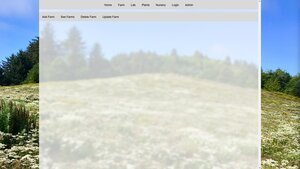
College of Engineering Unit:
Overview
This project focuses on using cloud-based technologies to promote the trade of plant materials between various parties (farms, nurseries, land managers, labs). By doing so, we can achieve faster turnover times for addressing the needs of habitat restoration efforts. Specifically, we designed and implemented solution leveraging many technologies to address a list of requirements and limitations related to functionality, usability, and long-term financial costs. Ultimately, the goal of this project is to assist restoration efforts and by extension help prevent extinction of protected species.
History
Prior to approaching the Capstone program, our project partner (Restoration Specialist David Thomson, United States Fish and Wildlife Service) was relying on handmade spreadsheets and contacting various seed holders individually. This pre-existing solution had instances where specific types of plant materials were needed for restoration efforts and stock was available in storage somewhere. However, a lack of shared knowledge of these facts led to a time sink. This communicationally hindering system gave the project partner motivation to find a set of developers to create a tool to address this productivity bottleneck.
Solution
Together, we designed, developed, and deployed a complex database (PostgreSQL), two separate APIs (Flask, Next.js) complete with user account services, and a GIS-empowered (OpenLayers) frontend website (React) all through Heroku’s free tier service offerings. Additionally, this project needed to remain operational and affordable beyond the timeline of the Capstone project’s development period.
Suggestions for Expansion
We recommend future work on this project, be it from volunteers or prospective Capstone students, focus on improving the efficiency of users’ interactions with the website. This will likely involve creating an automated system for digesting various data formats that are used by members of the Plant Partnership to represent stocks of seed so that collections of collections can be imported all at once into the database for tracking.
Also, our initial solution design suggested several other usability beyond-MVP features which were unrealized in our development process. Notably for ease-of-use, the APIs should be able to integrate with an external database, the Integrated Taxonomic Information System (ITIS), to provide users with various ways to address specific plants. It is important to do this because conventional means of referring to plants through scientific names are subject to change based on reclassifications. This can result in ambiguity regarding how any specific type of plant may be addressed.